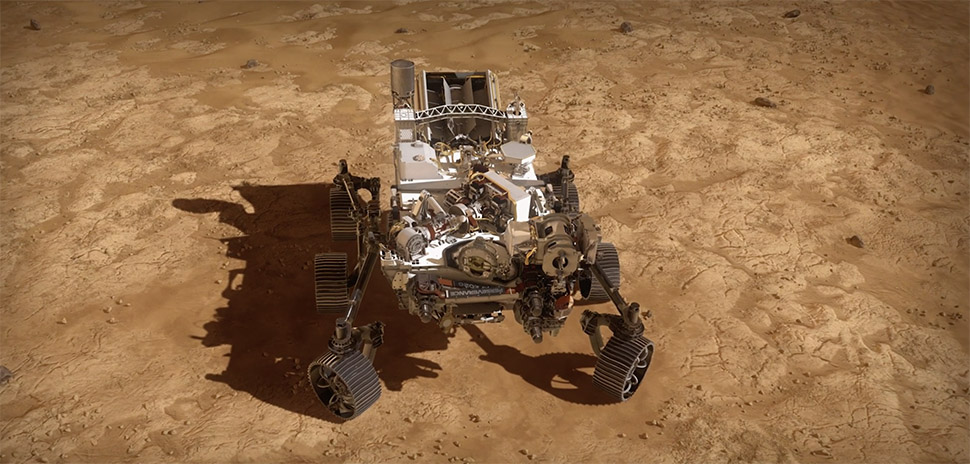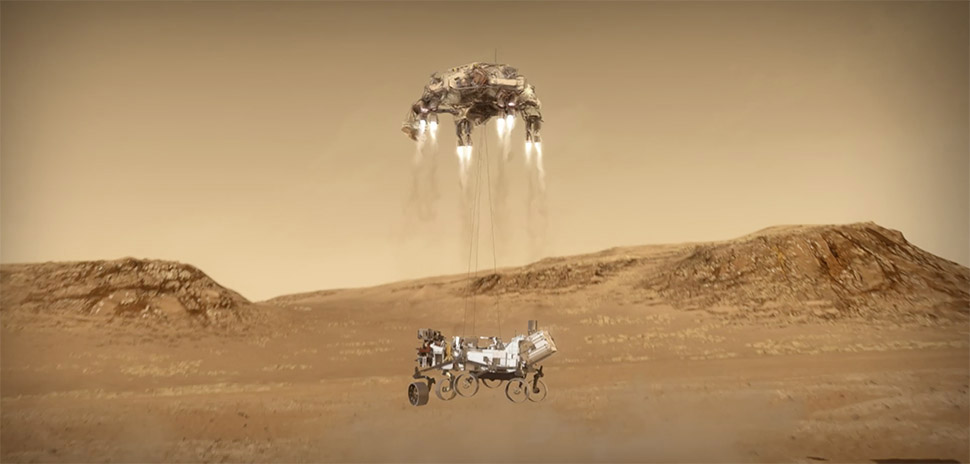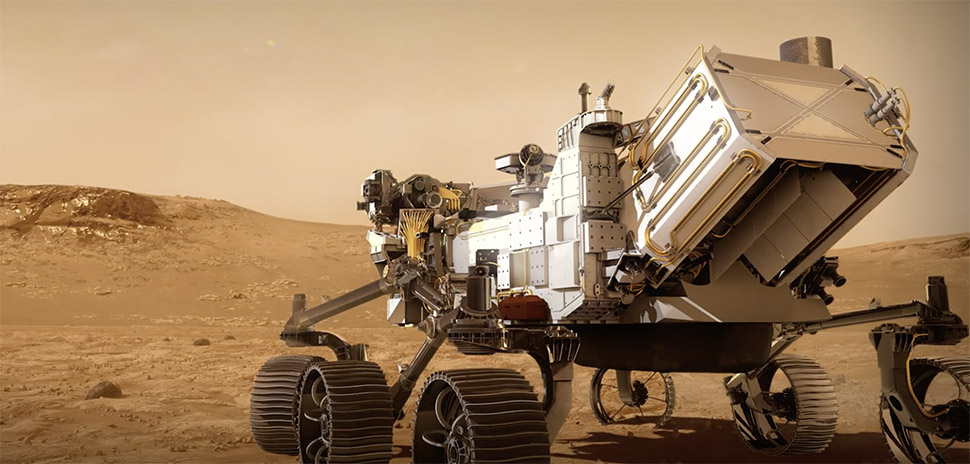Dallas is headed to Mars—sort of. Spacecrafts from several countries are currently flying from Earth to Mars, most of which are set to arrive in early 2021.
One of the companies making significant contributions to make those missions happen is Dallas-based Continental Electronics Corporation (CEC), a trailblazing manufacturer of many of the world’s high-power radio frequency solutions. For seven decades (the company recently celebrated its 75th anniversary), CEC has put RF technology on the map—literally—via science, industrial, government, defense, and broadcast initiatives on six continents.
Thursday, Feb. 18
Check NASA for the many viewing options for the momentous event. Some programming begins as early as 11:30 a.m. CST.
“Continental Electronics makes the longest-distance radio transmitters in the world,” CEC President Dan Dickey says. The team puts its mission simply: “No matter where you stand on earth or travel in the galaxy, you can receive a signal from a Continental Transmitter.”
The state-of-the-art tech can send signals beneath the ocean’s surface to beyond the solar system. To Dickey, that’s a main reason why NASA has chosen a Dallas company for its critical missions.
In 2020, CEC delivered two new high-power transmission systems to NASA’s Jet Propulsion Laboratory through a new partnership that involved the robotic exploration of Mars. One is at the NASA Deep Space Network station, or DSS43, in Canberra, Australia. When we last spoke with Dickey, Continental Electronics was in the process of retrofitting DSS43.
The largest NASA communications antenna in the southern hemisphere, DSS43 helps guide and command spacecraft from several countries, including the U.S., as they approach Mars. It will be used to send commands and receive responses from the farthest away space probes, such as Voyager 2 and New Horizons, Dickey says.
It’s a tall task for CEC: The company’s transmission equipment sends data messages from Earth to the spacecraft, which is used for course correction, uploading new software, pre-programmed sequences of maneuvers, and more.
CEC says its transmitters provide extremely low noise signals—necessary to support navigation in an interplanetary mission—that can determine the speed and trajectory of cruising spacecraft. This allows for the team back on Earth to apply course corrections, if they’re necessary.
In November 2020, the NASA Jet Propulsion Laboratory received the first command uploaded to Voyager 2 since March. The successful message was transmitted via the updated DSS43, making it the only dish in the world that can now communicate with Voyager 2.
It marked major headway for the spacecraft that’s 11.5 billion miles away. “Since the dish went offline, mission operators have been able to receive health updates and science data from Voyager 2, but they haven’t been able to send commands to the far-flung probe, which has traveled billions of miles from Earth since its 1977 launch,” NASA says.
CEC’s X-Band and S-Band transmitters helped complete the call.
Several other countries have upcoming spacecrafts flying from Earth to the Red Planet, with most arriving at Mars in early 2021. The next Mars robotic mission, Perseverance, launched from Earth last July, will also go through a challenging atmospheric entry and landing, so it’s critical the DSS43 is fully functional.

3D rendering of the Perseverance rover [Image: NASA]
The Perseverance mission, dubbed an astrobiology mission, involves sending a 2,300-pound robotic scientist to Mars with the intent to collect rock and soil samples to study on Earth for potential signs of life. According to NASA, it’s part of a larger Mars Exploration Program to explore Mars’ ancient past and potentially discover a second data point for life—marking what Dickey calls a “significant milestone” in gaining “more knowledge about the history of our planetary neighbor.”
But first, Perseverance has to complete its entry, descent, and landing (EDL), which the Washington Post refers to as the “seven minutes of terror.” CEC’s technology will assist with that.
Matt Wallace, deputy project manager for NASA’s Perseverance rover mission, told the publication it was similar to landing a car on Mars; “one of the hardest technological feats human beings have ever attempted.” It’s the hardest part of the mission, the team says.

[Image: NASA]
After traveling more than 300 million miles, Perseverance is expected to arrive on Mars inside the Jezero crater at 12,000 miles per hour tomorrow, Feb. 18. The Washington Post compares it to throwing a dart from the White House and hitting a bull’s eye in Dallas.
CEC, like the rest of the world, is waiting with bated breath. In the days leading up to the landing, the corporation has provided transmitters that sent final course corrections and landing instructions for a successful touchdown.
Where to watch
Check NASA for viewing options on Feb. 18.
Meet CEC
Dallas Innovates talked with Dickey about recent innovations, how the company has adapted during the pandemic, and why Continental Electronics is a key player in space travel:
Tell us about GPS development at Continental Electronics:
Last year began with a major project to field a new timing and navigation test environment. As many of your readers know, the GPS system is the only available source of time and position for use by businesses and the public.
Every year GPS becomes increasingly vulnerable to attacks from jamming and spoofing by malicious people who seek to disrupt everyday life. Congress has directed the US government to put a program in place to investigate ways to make GPS more resilient against these attacks.
Continental Electronics is arrayed with other companies that can provide such a solution using ground-based radio signals. By having both satellite-based and ground-based signals, we can make it much more difficult for attackers to adversely affect our national position and timing system. We started to run initial tests on the system just before COVID-19 hit. We continued those tests despite the COVID-19 situation and completed all required testing, proving that our system can provide a resilient time and position service. We were able to compare our system against the GPS system and the timing performance of the ground-based system was comparable to GPS.
In the future the use of terrestrial and satellite systems combined can make the US GPS system much stronger and resilient to outside attacks. There are several new features we will offer, such as indoor reception of accurate time signals which GPS does not do very well today. This is important for businesses such as banks, telecommunications, power grid operators, and others who must put their GPS antennas outside so they can “see” the satellites. The new system we have developed will work in many indoor locations thus making it harder for bad actors to disrupt communications and other critical infrastructures.
On the company’s response to the pandemic:
Some of our employees work at our facility in Dallas and other employees split their time between home and the office. We make it easy for any employee to telecommute through our secure cloud-based communications network. Continental Electronics also provides several online, internal blogs and in-person events where employees can interact and keep our internal social interactions as normal as possible.
On fostering teamwork in challenging times:
Continental Electronics has increased our internal communications this year with monthly newsletters and internal blog postings. We have increased our use of social media, including LinkedIn, to communicate with colleagues and customers. So, our employees are much more up to date than ever before on significant company events and milestones that we have achieved. Continental Electronics also provides a significant employee and family assistance program. Most of our employees have families so, at times, the most stress they face is at home. School schedules are often disrupted and there is often a need to provide support to the extended family during COVID-19.
Sandra Engelland and Quincy Preston contributed to this report. The Q&A has been edited for brevity and clarity. A version of the story was originally published in Dallas Innovates 2021: The Resilience Issue.
Read it online
Our fourth annual magazine, Dallas Innovates 2021: The Resilience Issue, highlights Dallas-Fort Worth as a hub for innovation. The collective strength of the innovation ecosystem and intellectual capital in Dallas-Fort Worth is a force to be reckoned with.
![]()
Get on the list.
Dallas Innovates, every day.
Sign up to keep your eye on what’s new and next in Dallas-Fort Worth, every day.


































































